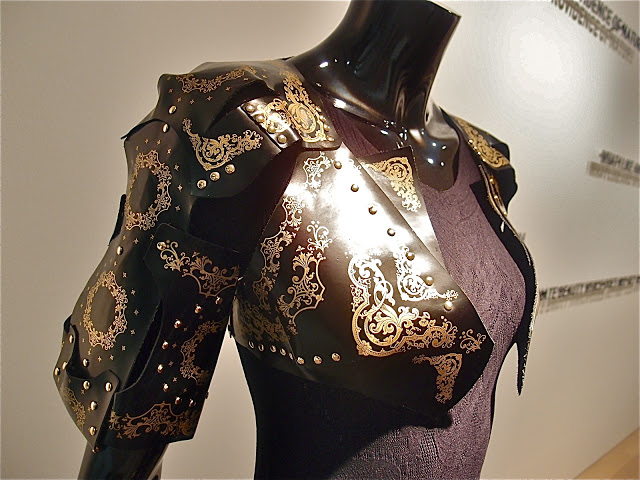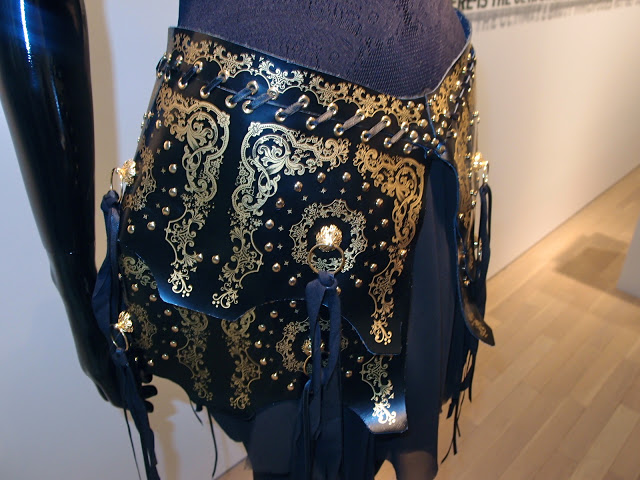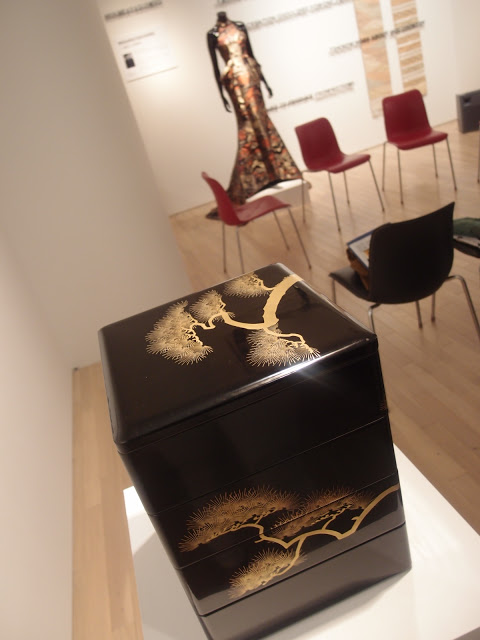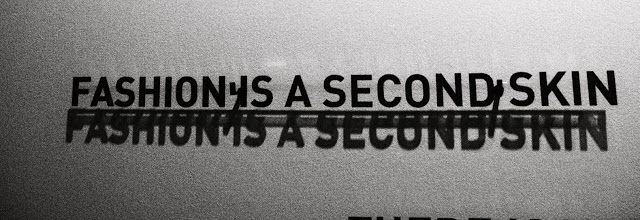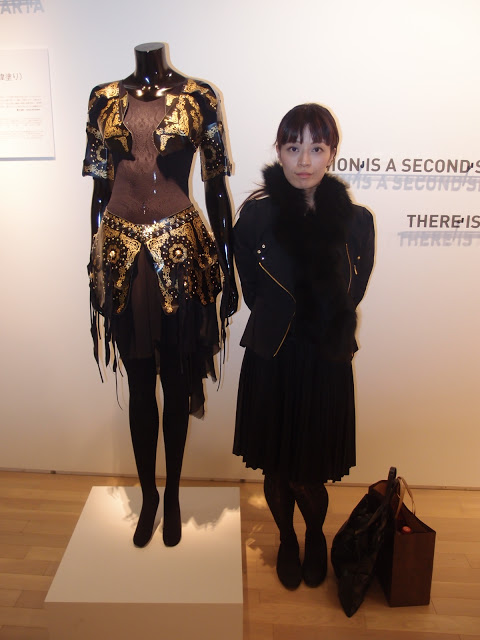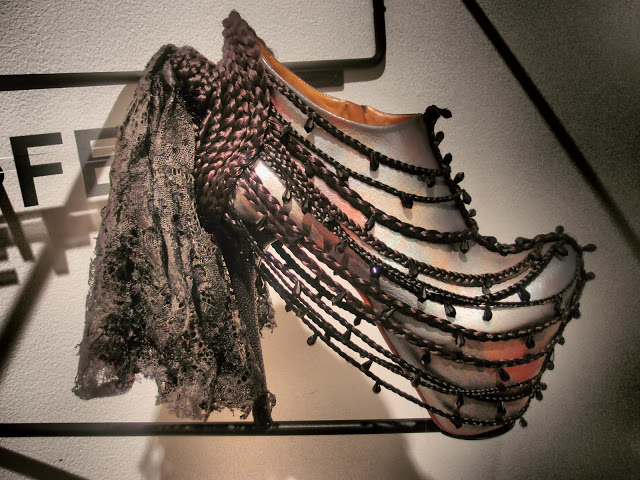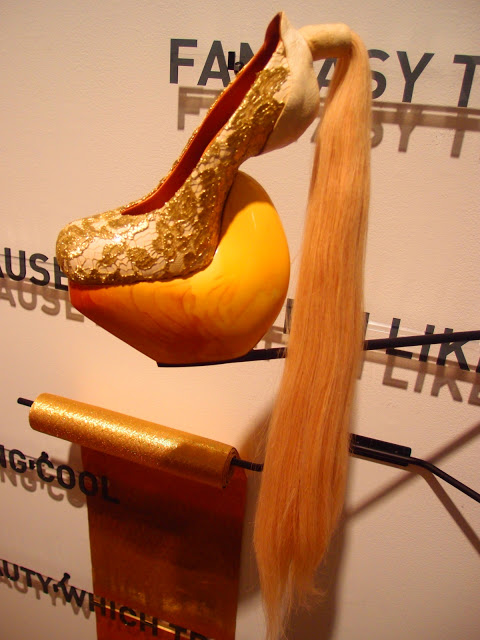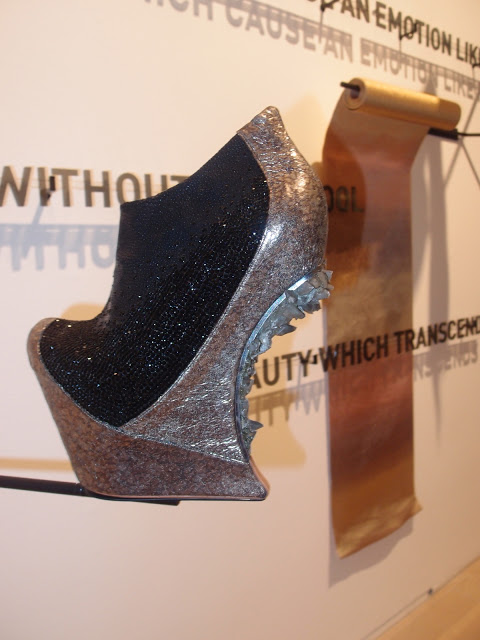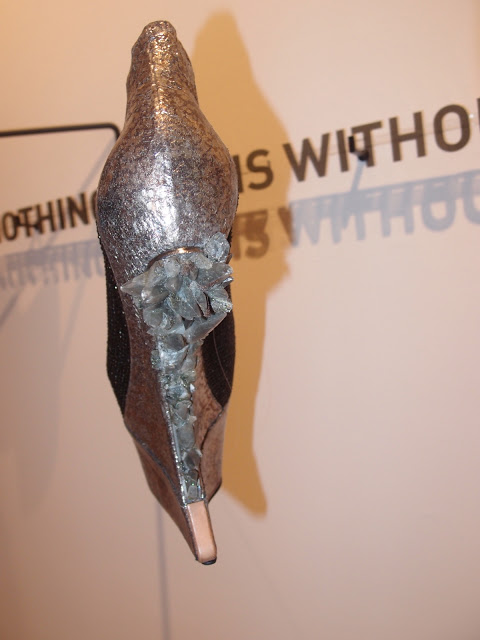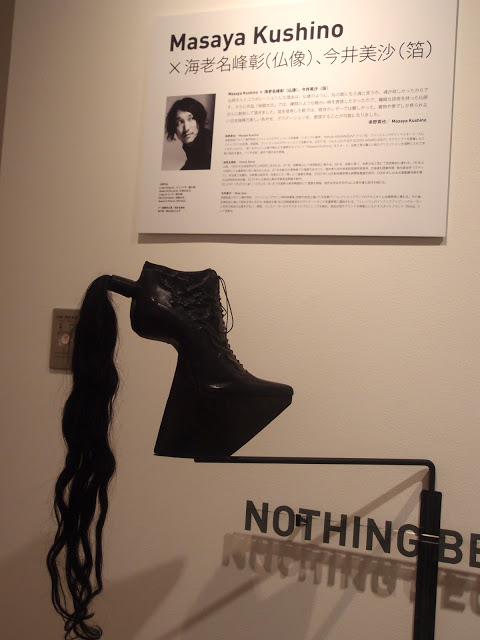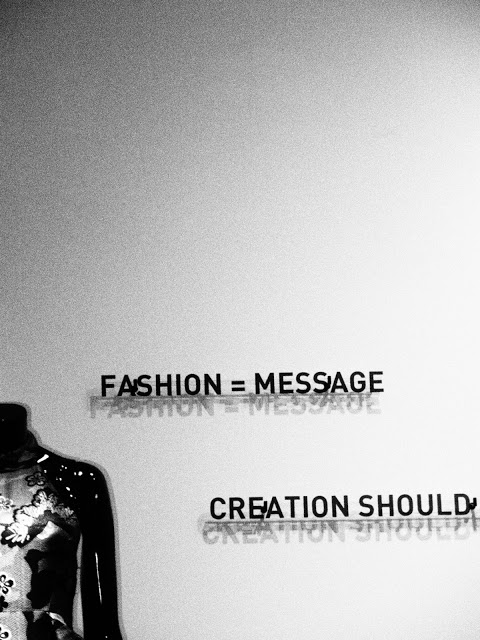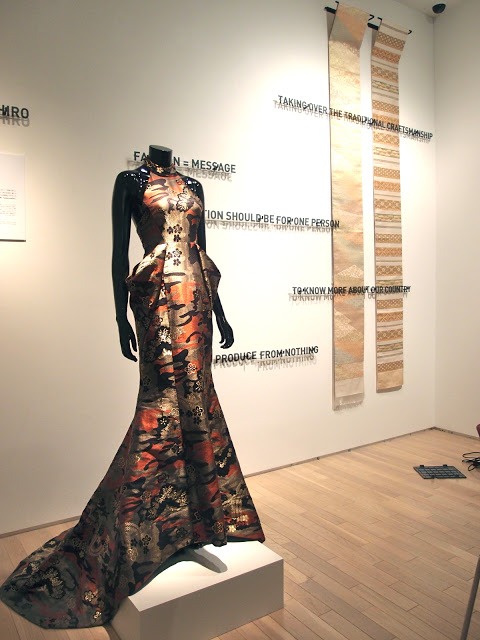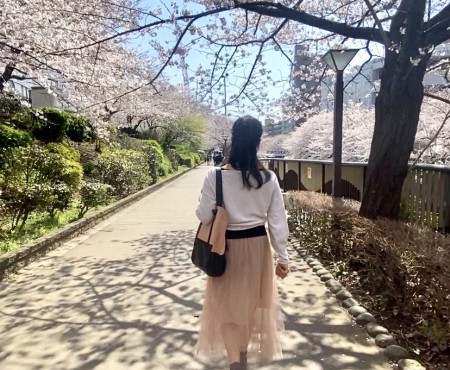前回コレクションレポートしたSOMARTAのデザイナー廣川玉枝さんがいらっしゃると聞いて、表参道のGOTHIS COUTUREにいってきました。
GOTHICCOUTURE EXHIBITION
ゴシッククチュール~ファッションが伝統工芸と出会う時~展
企画監修はアートカレッジでお会いした生駒芳子さん(元Vogue , Marie Claire編集長)。
日本のクリエーションの最先端を走るアーティスト達が伝統工芸の世界に目を留め、
かつてない表現、美意識の領域に挑む動きに光を当ててる。
ショーだけだと一瞬でしかみれないけれど、生駒さんの編集によって綺麗にわかりやすく並んでいました。
I went to the GOTHICCOUTURE EXHIBITION,
which was about the collaboration of tradition art and fashion.
The curator was fashion journalist, Ms.Yoshiko Ikoma who is ex Vogue chief editor.
SOMARTAのデザイナー廣川さんにとって、ファッションは第二の皮膚。
皮膚のような、軽くてストレスがない服がつくれたらよいなと考え、
そのためには世界で一番薄いオーガンジーのようなハイテクノロジーも使う。
そんななか、いわゆる「ローテク」である会津塗りとの出会いは
SOMARTAソマデザインとして 「伝統工芸をどう復活できるか」を考え始めた事だと言う。
技術はあっても現代の生活に合わないものを、新しい生活にあわせて作る作業。
御重箱をジュエリーボックス、 手鏡などの雑貨、家具などのライフスタイル系からはじまった。
廣川さん自身、3年前に福島に工場見学にいったときは何も持っていなかったが、今は伝統工芸品をコレクションするほどに。
「知識はモノを面白くする。こんな風に作っていたんだ、というのを発見すると面白い。
人は考えていかないとダメなんだな」
このSOMARTAとのコラボレーションは、
伝統工芸をどう広げるか、という話のときに量産するのではなくて知ってもらうという役割を果たす。
徹底的なリサーチをして勉強するのが好きという廣川さんらしく、ただ表面をまねしただけでない深みがある。
Fashion is second skin, Ms. Hirokawa, the designer of SOMARTA said.
Her ideal clothing is something like skin which is light and which is not stressful,
so she uses high technology just as the thinest organdy in the world.
But the Aizu coating, the low technology met her , when she started thinking what can SOMA-DESIGN contribute to traditional art.
The technique of traditional art is gorgeous, but sometimes it does not much with the toda’s life life.
So she transformed tiered lacquer ware boxes into jewelry boxes, for example.
Until 3 years ago when she went to the art factory, she did not have anything but now she has a collection of tradition art.
“Knowledge makes things more interesting. Knowing the process is really fun. We need to keep thinking about this.”
The Collaboration of this Aizu Coating and Somarta, is the chance for many people to know about this wonderful Aizu-Coating.
日本で発表しづける理由 – Why does she stay in Japan?
“海外で発表するデザイナーが多い中、東京をベースにし続けているのは、
生地、ボタン、ファスナーひとつをとっても日本のほうが手に入りやすいといわれた。
1970年代 三宅一生さんが修行地のパリではなくて東京でスタートしようと思ったのと同じ理由。
金沢にある刺繍工房、東北にもいっぱいある素敵な工房。これらがなくなっているのは、本当に惜しい。”
“今回の会津塗りも、Bitowa漆の集団が集まっている。
若い人達が伝統工芸の継続に対して危機感を持ち、それをなんとかしたいという思いがあって動いている。
経産省もBitowaを支援はしている。けれど、産業として残す気持ちはあるのかしら。”
The reason why she stays in Tokyo is because she finds good quality of buttons, zippers, and fabric in Japan.
It is the same reason as Issey Miyake who came back to Tokyo after studying in Paris.
It is really pity that many great ateliers of embroideries and factories are dying.
例えばフランスでは、シャネルがアトリエ刺繍工房Lesageを買収してメティエガールというブランドを作り、工房を継続させている。シャネルは工房が他のブランドと取引する事も許して工房をブランド化し、継続的な販売は可能にした。
例えばインドでは刺繍工場に20代の女性が1000人に居る。伝統的な技術が伝わるように、国がバックアップしている。
さて、日本は?
For example in France, Chanel bought the atterie Lesage, which has great history of embroideries so that it can exist.
Channel let Lesage to do business with another brands, so that they keep good quality and their business.
For example in India, government paid wages for 1000 young women who is in the embroideries industry , so that the traditional embroideries technique will be kept.
So ,how about in japan ? How are we going to keep the technique?
伝統工芸は過去の産業?
伝統工芸産業のお給料は実際どうなのかというと、やはりとても低い。
文化服装学院の学生からは「それじゃ就職したいと思う人は少ない」と声が上がる。
実際、デザイナーも縫製工場ではたらいているひとも、最初は住み込みで10万円ということがざらにある。
それが、アーティストというと銀行口座も広げられない信用の低さに繋がる。
フランスではアーティストというと尊敬される。
また芸術的な人間国宝に対し、国は後継者育成のためだけに200万円を渡すという。
But as you know, the salary of the traditional art industry is pretty low.
A student of Bunka University honestly said “Not many student would like to get a job with low salary”.
In fact, people at sewing factory and designers get less than 100,000yen (1,200 dollars) a month.
That leads the image of Artist who can not even open the bank account.
It is opposite of France, where artists are respected, and government pays 2million yen to famous artist, just grow his/her young successors.
工房、工芸が憧られ、誇りが持てる産業にする社会にするにはどうすればいいか。
言い換えれば、どういうふうに伝えれば、作る過程に注目が行くようになるのかな。。
伝統という過去の産業とするのではなく、今も進化し続ける現在産業であることを伝えていかないと行けない。
アパレル工場のコンサルをして、女の子達が毎日10時間はたらいてて、
この姿、情報ってどこにも見せられる事がないんだ!と衝撃を受けた。
それまで、洋服はハンガーにかかった姿から後しか考えた事がなかったから。
現在ブログというメディアを書いている一人として、
どういう風に伝えていくべきかはをもう一度考えるきっかけになりました。
みな「メディアが重要」というけれど、具体的なアイディアについて語る事は少ない。
わたしのアイディアとしては、とりあえず雑誌の読者モデルとして工房や生産工場の人達に出てもらうこと。
洋服の完成した姿を扱う人はメディアに出やすいのだけれど、
そうでない生産過程の人達をメディアで「憧れ」として取り上げるところからはじめたらどうだろう、と思いました。
そしてブロガーの私として出来る事は、自分が書きたいと思ってた生産過程について、もっと書く事ですよね☆
また余談ですが、上記の対談に出てきたフランスのアトリエ刺繍工房Lesageにいってきました。
お話を伺い、実際作っているところをみせてもらった。そして、自分自身でも作らせてもらいました。
こちらは、また後日レポートしますね。
The talk went on and the final topic was what we can do to make the traditional art industry more valuable.
In other words, by the media, how can we tell the value of process.
We need to tell that the traditional art is not the “Past” industry, but “Today’s” industry.
When I was ex-apparel factory consultant, who was shocked with the hidden scene of girls just sewing for 10 hours straight.
Until then, I only knew about clothing after it is sold in the store.
As a writer, this was a good chance to rethink how I can tell about the “Process-part of fashion.”
Everybody says “Media is the key”, but not many people talk about concrete ideas.
My idea is simple. We should treat who is in atelier or factory as READER-MODEL
Also as a blogger, I should write more about the process which I know.
P.S.
I have been to the french atelier Lesage.
It was very impressive- I remember they are really proud of that , and also they let me made the embroideries.
This exhibition reminded me to write about this later.

